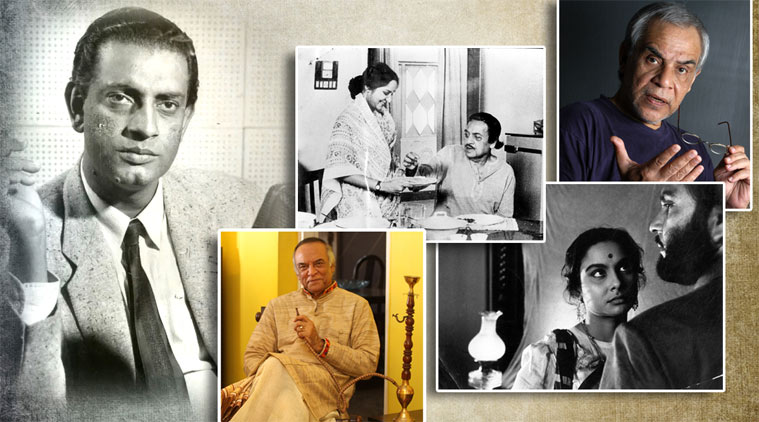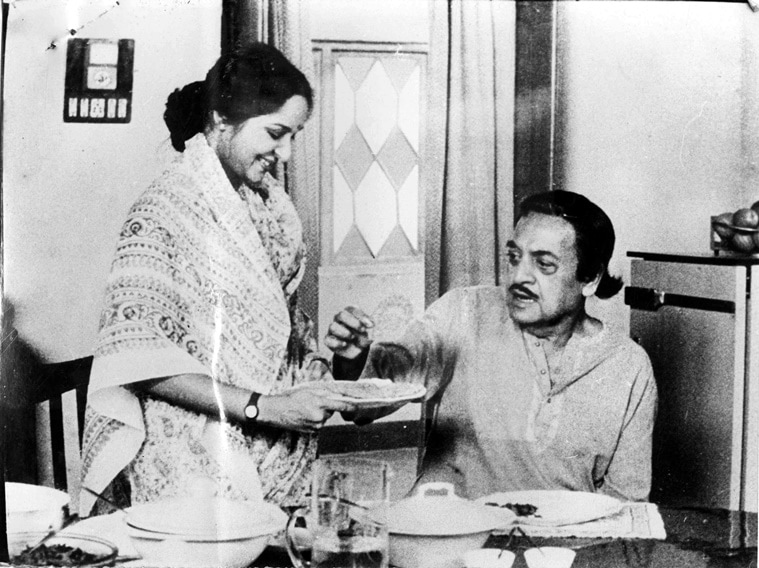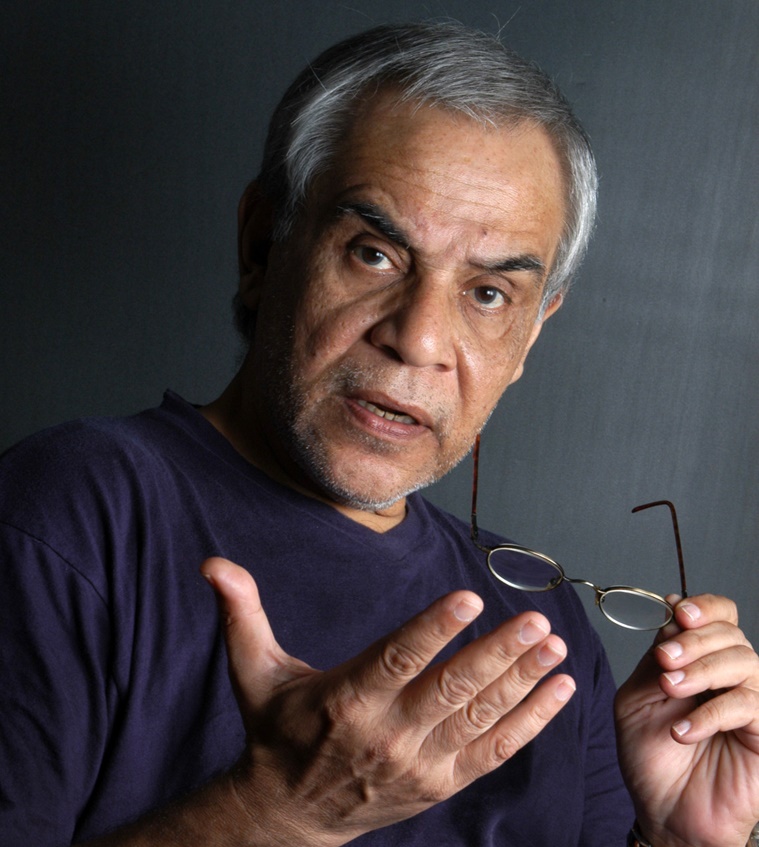From his innate understanding of his cast’s abilities to his mastery over all aspects of cinema, actors on what made the filmmaker one of the greatest of all time
Mamata Shankar, actor and dancer
My father Uday Shankar and Satyajit Ray, whom I call Manik Kaku, knew each other for many years. Like every artist of that time, I always wanted to be featured in a Ray movie, even if it’s a small role. Yet, I could never ask him.
One day, my husband Chandrodoy Ghosh read that Ray was making a new movie after five years. Before I knew it, he had dialled Manik Kaku’s number. Ray answered all the calls himself. I was at a loss for words when this well-known voice said “hello”, but somehow managed to ask if I could be in his new movie. When he said that he had, in fact, thought of me, I was suddenly wide awake. He said, “Give me a few more days and I will let you know”. He had two projects in mind and he was still unsure which one to make first. Luckily, I ended up acting in both — Ganashatru (1990) and Shakha Proshakha (1990).
In a scene from Shakha Proshakha, Ranjit Mallick who played Protap tells me that even though he is married we can still be friends. In response I say, “Three is a crowd, Protap”. Manik Kaku told me the common viewers might not understand that line and asked me to think of a substitute. I was amazed. We always assumed that only a certain class of audience watches his movies. Yet, he was thinking of the masses. “Should I say ‘Oshob kotha chhad, Protap (Leave it, Protap)’,” I asked. He was happy with the suggestion.
ALSO READ | ‘Ray’s women had agency. He wanted to capture the half shades, the hardly audible notes in them’: Sharmila Tagore
However, it’s my casting in Agantuk (1991), his last movie, that came as a huge surprise. He told me that he can’t think of anyone else to play the role of Anila. To hear him say this was like receiving a lifetime achievement award. While working with him, I realised he was so child-like. His personality was such that people were in awe of him. However, when you came to know him, you would still be in awe of him but discover that he was a very affectionate and simple person.
Manik Kaka had called Mrinal Sen, who introduced me in films (Mrigayaa, 1976), for a private screening of Agantuk. Mrinalda was full of praise for my performance. I tried to say it was all because of Manik Kaku. But Manik Kaku won’t have any of it. He gave full credit to me. That’s one of my happiest memories.
ALSO READ | Ray was possessive of me, like a father is of his son: Soumitra Chatterjee
Dhritiman Chatterjee, actor
When I was studying in Delhi University in the late ’60s, we started its first film society. That was when the film society movement was very active in India. I interviewed Satyajit, one of the pioneers of the movement, to publish in the magazine we were going to launch.
I met him again through a mutual family friend when he was casting for Pratidwandi (1970).
At that time, I had no plan to be an actor. I was working in advertising, which remains my primary profession. But I saw this as an opportunity to watch Ray at work. He was involved in all aspects of the film. After the shooting, I used to go to the editing room to see him edit. I remember being present at the sound mixing session too. Working in Pratidwandi gave me a greater understanding of cinema.
Ray made Pratidwandi during a turbulent period, particularly in West Bengal. This is reflected in the movie. When he took new actors, he was careful about the selection. He picked those who he thought could effortlessly slip into a particular role. My understanding is that he didn’t believe much in character analysis and rehearsals. When the script was ready, he would call everyone – actors, technicians, and family members – for a reading. That way, everybody was on the same page and got a sense of what he wanted. Before a shot, there would be a couple of rehearsals but there wasn’t any intense preparation or workshop. So, to a great extent, it was about internalising the role.
ALSO READ | Martin Scorsese writes: ‘Satyajit Ray’s artistry, filmmaking took my breath away’
After Pratidwandi, I stayed in touch with him. He had an open house policy. If you were passing by his home at 1/1 Bishop Lefroy Road in Kolkata, from downstairs you could see if the windows of his living room were open. If they were open, it meant you were welcome to drop in. I used to visit him often and we used to discuss various things such as anthropology, philosophy, and literature.
For Ganashatru (1990), he decided to cast me in a role that was different from what I had done before. It was what we today call ‘a negative role’. I took this as a challenge. He was one person I would never say “no” to. That experience was rewarding. Agantuk (1991) followed soon after. Even though I had only one scene in it, people still remember it.
Broadly, he had two ways of dealing with actors. With one group of actors, he would be very precise, almost mechanical. Others, he would allow them to essay the role as they wanted, intervening only when he thought there could be an improvement. I was fortunate to fall under the second category.
Barun Chanda, actor
I used subterfuge to meet Satyajit Ray for the first time in the late ’60s. I was working in advertising at that time but wanted to act in his films. I pitched an interview with Ray for a youth magazine of The Statesman. When they okayed the idea, I sought his appointment. I thought if he grants me half an hour that would be enough for him to size me up. If I fail to impress him, then I would have tried and lost. Luckily, he liked me and we stayed in touch. I used to often join the Sunday adda at his home. By the time, he chose me for Seemabaddha (1971), he was reasonably sure that I was right for the role of Shyamal, a sales manager. Since Shyamal was from the corporate world, he probably thought I would be a natural.
Though many believe Seemabaddha (1971) was my debut movie, technically it wasn’t. Ray asked me to play a small role as Naresh, the political guide of protagonist Siddhartha (Dhritiman Chatterjee) in Pratidwandi (1970). However, my face was never revealed in it. When the dubbing for Naresh took place, I wasn’t in town. It’s Ray who dubbed my voice. Later on, I realised that Ray had intentionally not revealed my face because he had already decided to cast me in a meatier role.
ALSO READ | The eye of a genius: The cinematic universe of Satyajit Ray
The beauty of Ray’s sets was that they didn’t look like sets. These days art directors have become over decorative. Ray never overdid these things. His greatness was in the art of concealing art.
Ray was the operating cameraman for his movies. He was a purist and an orthodox cameraman. He would never use a zoom lens or a tracking shot unless he thought it was really necessary. He used fixed lenses and frames. He believed that the viewers must not notice the camera. Instead, they should assume that for two hours they are watching life playing out on screen. While editing, he didn’t splice the films together. He knew precisely where to make a cut in a frame. He composed his own music too.
There are very few directors in the world who have mastered virtually every aspect of filmmaking like Ray.
Madhabi Mukherjee, actor
Cinema is the art of moving images. Yet, once talkies became popular, films became dialogue-heavy. When Satyajit Ray made Pather Panchali (1955), he established that cinema is driven by visuals. He didn’t require words to express the emotions of Apu and Durga. There are many such instances in his cinema.
When I first worked with him in Mahanagar (1963), I was astounded by the way he had envisioned Arati, my character. At a time when middle-class society was steeped in patriarchy, Arati steps out of the home to take up a sales job. She doesn’t have an identity or confidence as long as she is confined to her home. She grows in strength and even stands up for another woman. When we were still filming Mahanagar, Manik da (Ray) asked me when we can work together again. I could not believe my ears. That was a question I should have asked.
Some days later, Manik da telephoned me and asked me to read Nastanirh (1901) by Rabindranath Tagore. I had read that story. He insisted that I read it again. After some days, he read out the script of Charulata (1964) to me. The script had all the details, except the last scene. When I asked about it, he told me he would reveal it later. He had a very strong personality so I did not have the guts to ask him again. For the last scene, we (Shailen Mukherjee and Madhabi) followed his instructions without asking any questions. Charulata’s appearance, which became so iconic, was completely designed by Ray. From deciding the type of blouses my character wears to the saris, he chose everything. Charulata received so much appreciation and acclaim. Today, memories related to the film come knocking unexpectedly.
As told to Alaka Sahani
? The Indian Express is now on Telegram. Click here to join our channel (@indianexpress) and stay updated with the latest headlines
For all the latest Eye News, download Indian Express App.
Source: Read Full Article








